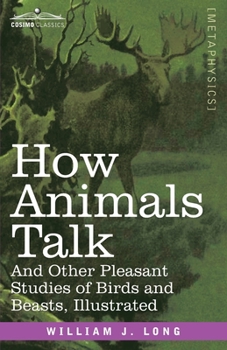How Animals Talk: And Other Pleasant Studies of Birds and Beasts-Illustrated
Select Format
Select Condition 
Book Overview
" . . . I can hardly meet a wild bird or beast even now without renewed wonder at . . . his instant response to every delicate impression, as if each moment brought a new message from earth or heaven and he must not miss it . . ."-William Long
How Animals Talk and Other Pleasant Studies of Birds and Beasts (1919), is a classic report on the author's pioneering research. A dedicated naturalist, Long was the first to challenge conventional research based on data into animal intelligence. During decades of field work he focused on the telepathic ways animals communicate in the wild. Concluding that animals are much more intelligent, emotional, and moral than previously believed, he wrote about what he observed related to the impact of human presence on animal life and reflected on the cost of separating ourselves from animals, who help define our place in the world.
A must-read for every natural historian, the book is enriched by the highly regarded work of illustrator Charles Copeland.






